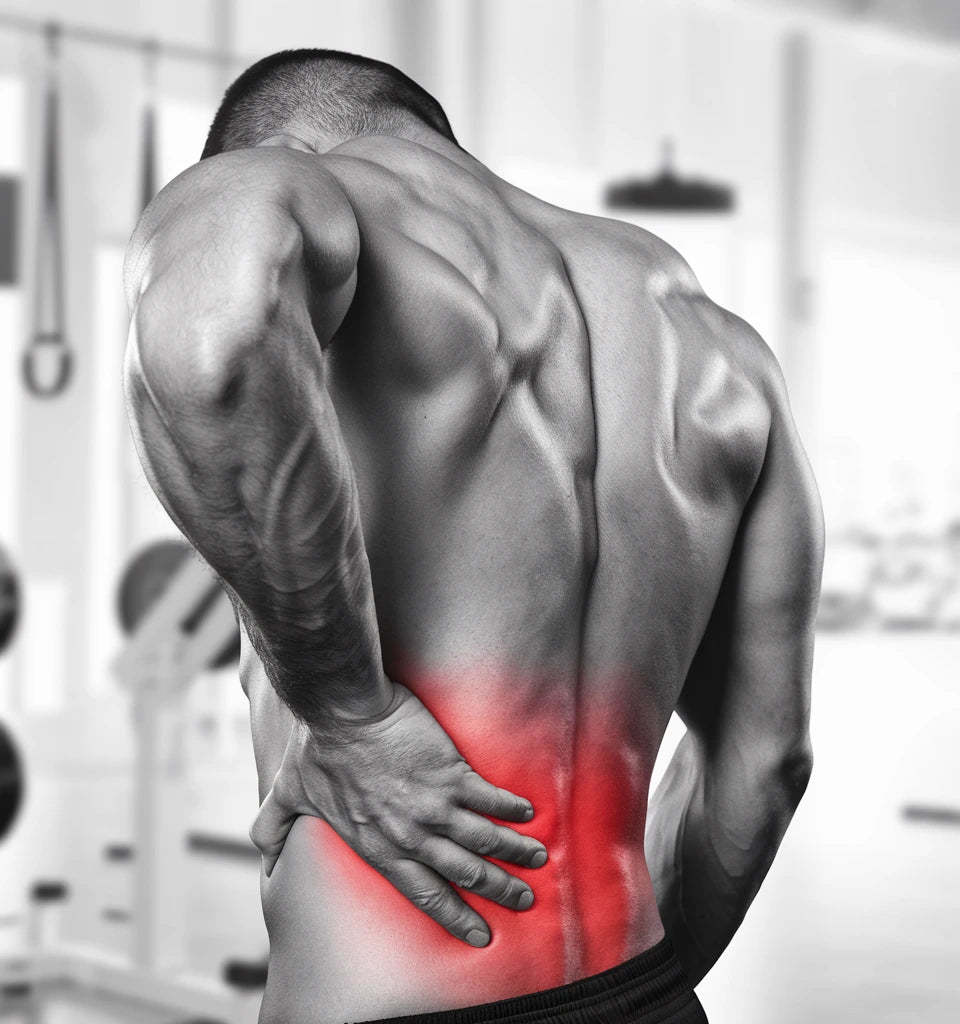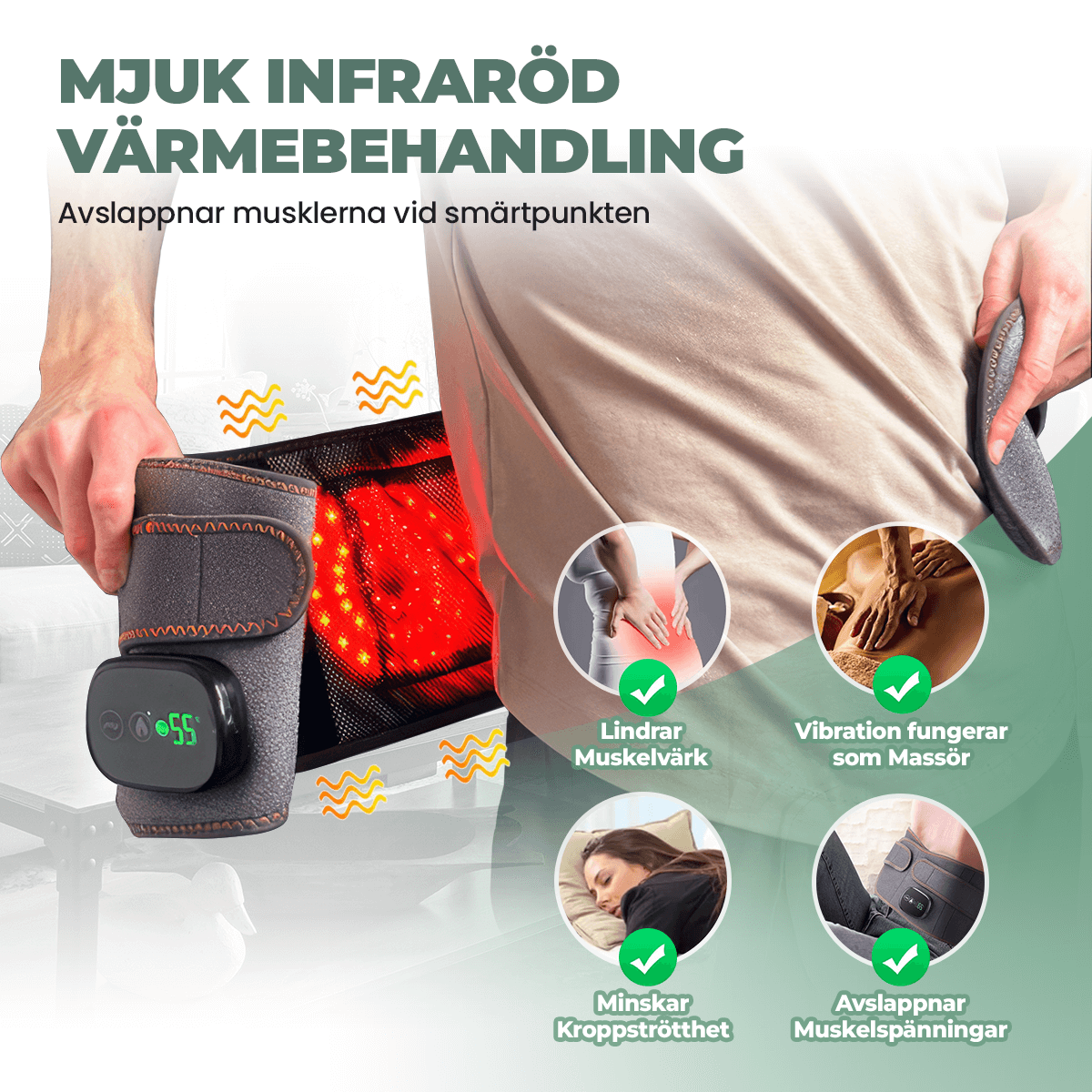Nerve Pain in the Back: Symptoms, Causes, and Treatment

Nerve pain in the back is a type of pain caused by irritation or compression of nerve roots in the spine. This article covers the most common symptoms, causes, and treatment options for nerve pain in the back.
What Is Nerve Pain in the Back?
Nerve pain in the back occurs when a nerve is irritated or damaged, often due to a herniated disc or pressure from surrounding tissue. It results in radiating pain, numbness, and tingling, which requires early treatment to alleviate discomfort.
Symptoms of Nerve Pain in the Back
Common symptoms include:
- Pain that radiates from the back down into the legs
- Numbness and tingling in the legs and feet
- Weakness in the legs
- Burning or stabbing pain
- Pain that worsens with certain movements or positions
Nerve pain in the back can be very intense and often causes radiating pain along the nerve pathways, such as from the lower back down into the leg (also known as sciatica). Many also experience a decrease in sensation or difficulty walking when symptoms are at their worst. Unlike regular back pain, nerve pain is often described as burning, electric, or prickling and can affect the entire body depending on which nerves are involved.
Causes of Nerve Pain in the Back
Several factors can contribute to nerve pain in the back:
- Herniated discs
- Spinal stenosis (narrowing of the spinal canal)
- Aging-related changes in the spine
- Injuries or trauma to the back
- Inflammation of the spine
Pain in the back with nerve involvement often occurs when discs between vertebrae are damaged or displaced, putting pressure on surrounding nerve fibers. In the thoracic region, nerve pain may be caused by issues with vertebrae affecting nerves that run around the rib cage. Chronic pain can lead to changes in the nervous system that make it more difficult to treat. Therefore, it is important to seek medical attention early when experiencing symptoms of nerve pain from your back down into your pelvic floor or legs.
Diagnosis and Treatment of Nerve Pain in the Back
| Diagnosmetod | Behandlingsalternativ | Fördelar med RyggKomforten™ och Termoreliever™ |
|---|---|---|
| Fysisk undersökning | Vila och smärtlindring | Ger stöd och stabilitet |
| MRI eller CT-scan | Fysioterapi och övningar | Förbättrar hållningen |
| Nervledningstest | Antiinflammatoriska läkemedel | Termoreliever™ kan användas för värme- och kylterapi |
| Röntgen | Kortisoninjektioner | RyggKomforten™ avlastar ryggraden |

How RyggKomforten™ and Termoreliever™ Can Help with Nerve Pain in the Back
RyggKomforten™ and Termoreliever™ offer several benefits for individuals with nerve pain in the back:
- RyggKomforten™ provides support and stability to the spine
- Termoreliever™ can be used for both heat and cold therapy
- The combination helps improve posture and reduce strain on the nerves
- Can be used as a complement to other treatment methods
- Aids in faster recovery and reduces the risk of relapse
For individuals suffering from nerve pain, aids like RyggKomforten™ can be particularly valuable as they relieve pressure on areas of the back where nerves may be pinched. This can help reduce pressure on the spinal cord or nerve roots, thereby alleviating pain that radiates throughout the body. Termoreliever™ can be used to reduce inflammation around affected nerves and improve circulation in the area, which may expedite the healing process.
Conclusion
Nerve pain in the back can be a very painful and limiting condition, but with the right diagnosis and treatment, most people can experience significant improvements. By combining medical treatments, physical therapy, and the use of supportive aids like RyggKomforten™ and Termoreliever™, many can effectively manage their symptoms and improve their quality of life. It is important to consult a doctor for an accurate diagnosis and individualized treatment plan.
Frequently Asked Questions (FAQ)
How long does nerve pain in the back usually last?
The duration varies, but with the right treatment, many can experience improvement within a few weeks to months.
Can I exercise with nerve pain in my back?
Light exercise and specific workouts can often be beneficial, but consult a physiotherapist for a tailored program.
How do I use Termoreliever™ for nerve pain in the back?
Use cold therapy to reduce inflammation and heat therapy to increase blood circulation and reduce stiffness. Follow the product instructions and consult with your doctor.
Can RyggKomforten™ prevent nerve pain in the back?
By providing support and improving posture, RyggKomforten™ can help reduce the risk of nerve compression and related pain.
When should I seek emergency medical care for nerve pain in the back?
Seek immediate care if you experience sudden, severe pain, loss of bladder or bowel control, or significant weakness in the legs.
